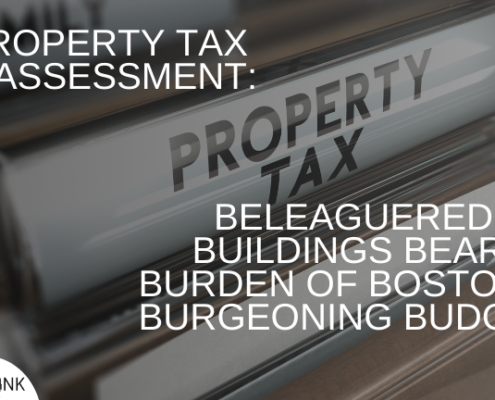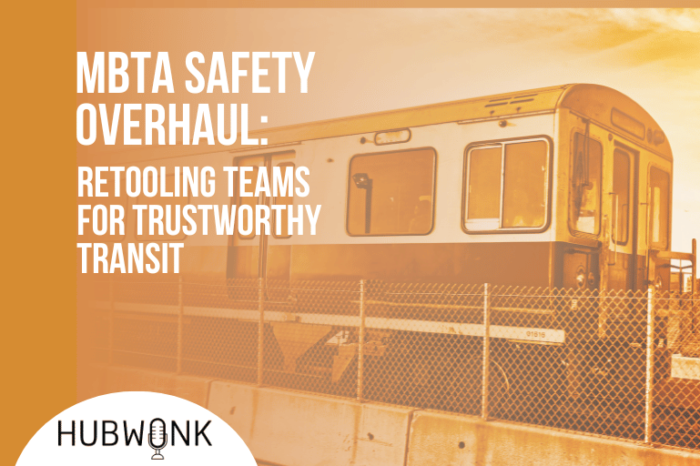MBTA Safety Overhaul: Retooling Teams For Trustworthy Transit
/0 Comments/in Blog: MBTA, Economic Opportunity, Featured, Podcast Hubwonk /by Editorial Staff
This week on Hubwonk, host Joe Selvaggi talks with transit advocate and expert Chris Dempsey about ways in which structural change in the MBTA’s safety oversight can be reformed to improve performance, engender greater trust amongst the region’s riders, and reduce transportation congestion in our growing economy.
Guest:
 Christopher Dempsey is a transportation advocate and former co-founder of No Boston Olympics, which formed in opposition to Boston’s 2024 Summer Olympics bid. He was a Democratic candidate for Massachusetts State Auditor for the 2022 election. From 2017 to 2021, Dempsey was the Director of Transportation for Massachusetts, a statewide advocacy coalition fighting for safe, reliable, and sustainable transportation. As Assistant Secretary of Transportation for Governor Deval Patrick, he co-founded MassDOT’s Open Data program, which made the MBTA the first agency on the East Coast to share real-time data with third-party developers that created smartphone apps for bus and train arrivals. He currently serves an elected member of Brookline Town Meeting and chairs the Brookline Transportation Board. In 2014, Dempsey, along with Liam Kerr and Kelley Gossett, co-founded No Boston Olympics, which successfully led opposition to Boston’s 2024 Summer Olympics bid. Influenced by this work and collaboration with organizers in other cities fighting Olympic bids, he co-authored No Boston Olympics: How and Why Smart Cities Are Passing on the Torch with Smith College economist Andrew Zimbalist.
Christopher Dempsey is a transportation advocate and former co-founder of No Boston Olympics, which formed in opposition to Boston’s 2024 Summer Olympics bid. He was a Democratic candidate for Massachusetts State Auditor for the 2022 election. From 2017 to 2021, Dempsey was the Director of Transportation for Massachusetts, a statewide advocacy coalition fighting for safe, reliable, and sustainable transportation. As Assistant Secretary of Transportation for Governor Deval Patrick, he co-founded MassDOT’s Open Data program, which made the MBTA the first agency on the East Coast to share real-time data with third-party developers that created smartphone apps for bus and train arrivals. He currently serves an elected member of Brookline Town Meeting and chairs the Brookline Transportation Board. In 2014, Dempsey, along with Liam Kerr and Kelley Gossett, co-founded No Boston Olympics, which successfully led opposition to Boston’s 2024 Summer Olympics bid. Influenced by this work and collaboration with organizers in other cities fighting Olympic bids, he co-authored No Boston Olympics: How and Why Smart Cities Are Passing on the Torch with Smith College economist Andrew Zimbalist.
Get new episodes of Hubwonk in your inbox!
WATCH:
Read a Transcript of This Episode
Please excuse typos.
Joe Selvaggi:
This is Hubwonk. I’m Joe Selvaggi.
Joe Selvaggi:
Welcome to Hubwonk, a podcast of Pioneer Institute, a think tank in Boston. The Massachusetts Bay Transit Authority moves between 600,000 and 1 million writers into and around the greater Boston economy every single day. Famous for being the first subway in the nation. The T is also notorious for service failures, such as those during the snow apocalypse of 2015, as well as a long string of safety incidents from green line train collisions, red line escalator malfunctions, orange line train fires and deaths from passengers caught doors, and drivers struck by passing trains. The safety failures of the T have knocked on notice by rider whose numbers are still substantially lower than pre pandemic levels, and more recently by federal overseers who have audited the system and found its safety oversight structurally and organizationally inadequate. As Massachusetts welcomes a new governor to the State House and looks to appoint a new general manager for the T, the safety and success of the T must concern everyone, as it stands, as the linchpin to our region’s continued economic success.
Joe Selvaggi:
What choices should we make to substantially improve the safety of the T and to cultivate a mass transit system that writers will use and trust? My guest today is former Director of Transportation for Massachusetts, and former candidate for state auditor Chris Dempsey. Mr. Dempsey, along with M B T A Advisory Board executive director Brian Hane, wrote a provocative opinion piece for Commonwealth Magazine entitled, digging Into Safety Oversight Options for the T Status Quo is Not Working, change is needed, suggesting that better t Rider Safety could be realized with a more specialized, independent, and better resourced safety oversight committee. Mr. Dempsey will share with us where current structural inadequate disease exist and identify alternatives that create transit specific safety expertise and the independence needed to ensure writers are safe. When I return, I’ll be joined by transportation advocate and expert, Chris Dempsey. Okay, we’re back. I’m Joe Silva. This is Hubwonk, and I’m now pleased to be joined by transportation advocate, Chris Dempsey. Welcome back to Hubwonk, Chris.
Chris Dempsey:
Joe, it’s great to be back with you and your listeners.
Joe Selvaggi:
Thank you. Well we’re going to talk about the topic of a, a paper that you just wrote for, for Commonwealth Magazine. But before we get into the present, let’s do a little talk about the past. You’ve recently gone through a, a challenging campaign. You ran for state auditor you were unsuccessful, but I thought you made a, an excellent candidate and made some great points because it speaks to the topic we’re gonna be discussing later, which is essentially how do we make sure our government agencies we trust with our dollars and our safety, how do we ensure that we get the best bang for our buck and, and get safe and effective government oversight. So before we talk about the t, let’s talk about what motivated you to run for our state auditor?
Chris Dempsey:
Well, Joe, it’s a little bit of an obscure office for people, and I think it’s obscurity hurt by chances in some ways, because we felt that we did very well with informed and engaged voters, but that was probably a minority of voters. According to the polling, only about 30% of voters knew me or my opponent on the day of the election, and there were more blank votes than the margin of victory in my race. But as obscure as it may be, I think the state auditor’s office is a tremendously important one. It’s one of six statewide elected positions, and it’s all about accountability. Has a team of about 200 auditors and analysts, and we send them into every corner of the executive branch of state government to figure out what’s working and what’s not working and how things need to change. And its ability to directly influence policy is relatively limited, but it has a real potential and opportunity to influence policy through the use of the bully pulpit, and by calling out government where it’s not working so that we can force it to be better and hold it accountable.
Chris Dempsey:
I was particularly attracted to this role because I’ve been inside the state bureaucracy and I’ve seen it working well, and I’ve seen it work not so well, including significant amount of waste that can, can and has to be addressed. But you also know, of course, that I was the leader of the grassroots group, no, Boston Olympics back in 2014 and 2015. And that was again, about accountability to taxpayers to make sure that we were not going off in the wrong direction and spending billions of dollars on a three week sporting event when we have so many other urgent public needs.
Joe Selvaggi:
So just one more question about this. Again, it’s a, a a, an elected office. You become part of government and then your role, if you were ha had been a successful state auditor, would’ve been to hold government accountable. How does government, you know, what, what are the elements of creating a government agency that effectively, you know protects us from government waste? Yeah. How, how does the war, how, how does it not get swept up and captured by the bureaucracy?
Chris Dempsey:
Well, I think it’s important that the auditor’s office is elected independently. It’s not appointed by others in government. It’s responsible only to the people, and it provides that opportunity to be honest with the public. There’s sort of, in my mind two main components there. The first is you have to make sure that you are accurate and factual in your findings and your conclusions. It’s tremendously important that the auditor be a trusted office. If it’s not trusted, then there’s really no point in having the office because, because you have to be seen as a credible umpire, so to speak as you’re, as you’re opining on or drawing conclusions about state government, I think the other important goal or, or requirement of the office is that you’re an effective communicator. That you can take that data and that analysis and then tell a story about why things need to change.
Chris Dempsey:
Joe, you and I have both been candidates. We have both been advocates for change in government, and it can be frustrating. And you have to have a when you don’t get that change that, that seems so obvious, right? That it needs to occur. You have to be effective at telling that story and, and that narrative. And I think we did that well with, with No Boston Olympics. I’ve done that in roles like leading transportation for Massachusetts to advocate for better transportation policy. So you know, I wish Senator Deso the best in, in this new role that she’s taking on. She certainly has an ability to, to tell a story. Well, and I, I truly hope though she was my opponent in the primary, that she will be effective and that will all benefit from her leadership.
Joe Selvaggi:
Indeed. Well well said. So, let’s change our focus from from your race to the topic of your paper one that you discussed, specifically, the challenges facing the M B T A with regard to safety. I’m not gonna spend much time helping our listeners reminding our listeners of the many safety incidents we’ve had with the t, some of them deadly, unfortunately, very, very terrible. But I wanna focus on your ideas for the future. How do we make sure the future is a, a safer one for the TEA than it is now? So let’s start with where the T is now. We all get on, at least I do fairly regularly, and assume I’m going to be safe. Who is in charge of ensuring that I am safe when I take the T?
Chris Dempsey:
Yeah. Let me start by saying that this paper was commissioned by the M VTA advisory Board. The advisory board is the entity that represents all of the municipalities that receive M V T A service in which pay an assessment every single year over a hundred million every year that those communities pay. So any of us that are taxpayers in those communities, it’s something like 70% of all the state’s population is, fits into that category. So
Joe Selvaggi:
Let, let’s rattle off, let’s rattle off, it’s a Quincy Revere, Boston and Brookline, right? Am I missing a whole bunch of others?
Chris Dempsey:
Oh, no, it we’re talking over 70 communities and maybe Oh,
Joe Selvaggi:
That’s right. Okay.
Chris Dempsey:
Including, including commuter rail service. Right. Okay. So there are different, we’re getting in the weeds here. There’s different zones. There’s core communities that includes Boston, Cambridge, Brookline, Somerville. Then there’s sort of the next ring out that have light rail service like a, a Newton or a Quincy. And then further out are the commuter rail communities that, you know, have much less service and therefore pay lower assessment or a lower rate. But we all, we all pay that through our property taxes. And it’s important that the advisory board represents those communities to make sure that those dollars are being spent well, and, and through that, that fair payer dollars are being, being spent well, that general taxpayer dollars are being spent, well, federal dollars are being spent well. So that’s, that’s the role that they’re playing here. And we are in this important moment for N B T A safety, mostly because of the significant number of issues and incidents that occurred and the unprecedented oversight that the Federal Transit Administration, the FTA has brought to the team.
Chris Dempsey:
But also because we’re now with a new administration on Beacon Hill new, new players in the corner office, governor Elect Huey has said that she wants to bring on a public transit or actually a broader transportation safety czar. And so we’re in this moment of change, and it’s a, I think, an opportune time for us to take a look at how the structures of safety and oversight at the T can be changed and reformed, contribute to that conversation. And I think RES will result in some legislative proposals and changes that I would expect would probably occur in Governor Healy’s first year as governor. That’s just me prognosticating, but I think it’s likely that we’re gonna see change. The advisory board wanted to make sure that change was informed by the experiences in other states.
Joe Selvaggi:
Indeed. So, okay. That you’ve set the table well. This is a time for change as a t the governor elect has suggested a, a safety czar would be a, a good focus of that change. But your paper sort of takes us from where we are to where you we might go. So, again, getting back to my question, who, who, where are we now? Who, who is in charge of our safety on the T now? Yeah.
Chris Dempsey:
So the M B T A has a safety chief and, and really dozens of employees that are dedicated to the day-to-day safety of the M B T A. That is an enormously difficult job moving hundreds of thousands of riders a day, thousands of employees equipment, some of which has been around for literally a century, and is still supporting the system that we all know today. And I, I agree with you, Joe. I know you’re a regular rider. I am as well. This is the first time in my life where I have genuinely questioned my safety when getting on an M B T A vehicle. It’s that concerning where we are. So you’ve got the team inside the team. Then of course, you have a number of oversight entities, including the M B T A board of directors, including the legislature.
Chris Dempsey:
But there’s another group that I think has gotten much less attention in in recent years, which is essential to providing safety oversight at the T. And that’s the Department of Public Utilities. Those of us that are work in Massachusetts public policy know the D P U as the entity that oversees regulated utilities particular gas and electric utilities. They also have an important transportation safety role. And that comes out of their oversight a century ago of railroads and street car systems. It’s sort of a, a legacy function for them. But I will admit to you, Joe, and there are others that, that worked in transportation that will say the same thing, that the D P U has not played a significant role despite having that legal authority. It has not had much of, much impact on the way that safety is seen and perceived and reformed at the M B T A. That has changed in the wake of the Federal Transit Administration stepping in and really calling on the D P U to do a better job through something called the State Safety Oversight Program. And so the, the purpose of the focus of this particular paper was what makes sense for the State Safety Oversight Program, the S s O program, which is a federally mandated program currently operated by the D P U, but potentially operated by a new entity going forward.
Joe Selvaggi:
So this is important. I I’m glad I learned a lot from your paper. Not Lisa, which is, there is a federal mandate for a safe, an independent safety organization, the S sso State Safety Organization. And they have as you point out, owing to largely a legacy of oversight, they have the D P U is our functional S s O, right? So, correct. That’s the link between federal and state. The t as you say, has the staff that manages itself, but things being what they are, it’s nice to have an independent oversight and perhaps even one that’s accountable to the federal government from which many dollars do come. Right? So they essentially, there’s carrots and sticks involved with the federal government saying, you know, you can have your your tea, but we wanna make sure there’s an independent agency overseeing the safety. So but as you also point out, it’s the same agency that o oversees the safety of, of much larger utilities. So they’ve got a lot on their plate. Your paper points to the fact that the dpu the safety entity that oversees the T is a relatively small portion of the dpu share with our listeners. How small of a portion is this federal SSL within D P U? Yeah,
Chris Dempsey:
It’s, it’s less than 5% and maybe as little as about 2% of their budget and, and their employee base. So it’s a, it’s a small fraction of their portfolio. If you look at the enabling legislation for the D P U, there are three commissioners. The three commissioners are required to have experience working in regulated utilities including natural gas and electricity. They are not required to have any, any transportation experience whatsoever. And it’s just not the, the core function of, of what they do historically and even today. Now I want to be clear that I appreciate that the D P U in the wake of the Federal Transit Administration stepping in has started to staff up and bring on more expertise. They are taking this problem seriously, but I think they would even admit that they have not traditionally played the role that they could, they have not been a, been a robust independent overseer to the M B T A and, and, and I don’t blame them again, given that they have so much on their plate when it comes to these other, other areas. You can see historically why these were all put together in one entity a century ago. But I think our paper and other commentary raises real questions about whether it makes sense going forward.
Joe Selvaggi:
Yes, indeed. I don’t wanna be beat it beat it to death, but from your paper the f d has criticized d p in its 2022 S m I report that quote, d p has not used as authority to ensure the identification and resolution of safety issues at the M B T A and D P U has been slow to complete corrective actions to address safety concerns. So essentially, your, your paper begins by saying, regardless of why the d p is not effective as an oversight a entity it isn’t the the federal agency that, that reviewed. The D P U said, look, the you, you’re not getting the job done. I think that’s sort of the, the predicate for your paper, which is to say, well, then what, what could we change to to, to get it done? Did they, specifically in this report cite what it is that the DPO O isn’t doing? Is it a a funding? Is it a staffing, is it a, you know, organization? What, what did the F FDA say was reason for the Dpu s inadequate oversight?
Chris Dempsey:
So, so there’s a lot there, and I would encourage folks that really want to dig on the details here to, to read some of the FTA report, which is, which is 90 pages that came out in late August of this year. And I, I will note here I use the word unprecedented for Theta’s decision to, to step in here. There is only one other example in the history of the FTA of them stepping into the degree that they have on the M V T A, and that’s with Wilma the, the Washington Metropolitan area system, the metro subway system in Washington, dc, which in many ways is a federal entity because of the unique nature of, of dc. So this is really the first time in the FTA a’s history that they have stepped in to a state controlled agency and said, we are so concerned about the reports that are coming out of of Massachusetts, that we are going to essentially take the reins here and step in.
Chris Dempsey:
That’s how concerned they were, and that’s how concerned all of us should be about about this situation. So, so look, they, you know, when they, when they looked at the D P U, which is just one component of their broader assessment of the M B T A they, they found that there wasn’t sufficient staffing. They found that the DPU was not following up on all of the recommendations that the FT A had made in a prior review of the D’S oversight. There was not sufficient expertise. So in the, in the staff of the D P U. So this is a, you know, this is a, a serious set of concerns that the F D A has and it makes clear that there’s real work to be done.
Joe Selvaggi:
So I think our listeners would not be satisfied if the DPU simply said, we’ll, try harder next time. Your part paper suggests the structural changes, and you really lay out two choices to take the role of the, the S S O role away from the D P U. Again, it’s just there by virtue of some legacy of them overseeing railways and, and move it somewhere else. And there are really two categories of, of moving it either to a new agency or to some independent level. Describe for our listeners what the, what you perceive to be the pros and cons of, of let’s say, moving it to a different agency. What are the candidates, where, where might it better fit?
Chris Dempsey:
Yeah, and you touched on this earlier, Joe. But to be clear, the, the FTA requires that the ss o be an independent agency, independent from the transit agency and be funded separately from the agency. Now not every state has the same governance structure for transit that Massachusetts does. And just, here’s just one example. The CTA in Chicago one of the, the three largest transit agencies in the country it’s really operated and managed by the city of Chicago. And so the, the state of Illinois is separate enough that whatever they do and decide is gonna be independent from the city. That’s clearly not the case in Massachusetts where the governor appoints the members of the M B T A Board of Directors and has significant ability to influence the, the budget of the M B T A. So so that would not be an app.
Chris Dempsey:
The FDA is going to require some independence here. So there are a set of, of entities that that could fit. One is the Office of the State auditor, and we say that in the paper. It’s, it’s independent, it’s, it’s elected independently and and could play that, that role. Another would be the Inspector general. Now the Inspector General is appointed by three people, one of whom is the governor, but there’s also the attorney general and the auditor. So, according to the FDA’s guidelines, that would be sufficient independence from from the governor to be able to play that role. And, and so I think those are the two sort of best possibilities. You could, you could think about others. It’s not clear to me that either of those make a lot of sense because of this, the, the special and unique skillset that’s required for, for transit safety and oversight.
Chris Dempsey:
It’s, it’s not the job of the, of the state auditor today and their team to put on hard hats and walk into tunnels and inspect concrete or to have the skillset to assess whether the the operators at the O C C, the operations control center in downtown Boston that operates our, our subway and light rail systems that they’re meeting best practices. You could build up that, that function and that ability over time. But it would be a little bit of a unique thing within either of those offices both of which are more focused on, on sort of broader management best practices, and then looking for financial improprieties, which is a, a really important thing. That’s not the focus of the S s O. And that’s, and that’s partly why we think it may make sense to create a, a new entity here that is just focused on this unique and special role of transit oversight and safety because of how specialized that skillset and requirement is.
Joe Selvaggi:
Now, you, you talked about two different aspects of why it might not be a great fit, because, you know, generally auditors is, again, you, you are an expert in that office. They’re looking for let’s say financial wrongdoing or, or say, misappropriation of funds. This is a, some a task for very, very skilled accountants, perhaps, right. Or lawyers. And what you’re saying is safety is not a generic concept or, or a good management is just not a generic concept. You need subject matter expertise to really effectively ensure safety within something as specialized as the t. You also hit on a little bit of the notion of where these organizations get their leadership from. In almost every case, the governor has a hand in that. Is there, is there a concern the governor also appoints a lot of the leadership of the t Yeah. Also then it would be a appointing leadership of, of this SS o organization wherever it resides. Is there a conflict there, knowing that the, the all all the people sitting around the table have have a friend in the, in the governor’s office and therefore can’t truly be independent from one another?
Chris Dempsey:
Yes. And that’s why the F T A requires that that separation, frankly, it’s, it’s not actually clear that the D P U meets that requirement today because of the influence that the governor has over the D P U. But the idea here is to, is to have an entity that is, that is firewalled from the, the, the politics of the, of the transit agency. And I, I can tell you, you know, knowing this firsthand in my experience in the Patrick administration, and it’s also been true in the Baker administration, be because the N B T A is such a high profile entity that is prone to, frankly, so many bad headlines. The, the governor’s office has a very, very strong hand in the day-to-day operations of the, of the M B T A, and especially in how the challenges that the M BTA are communicated to the broader public.
Chris Dempsey:
I have heard stories in recent years, and I, I don’t mean this as a criticism, it’s just an observation of draft press releases going up to the corner office from the M B T A and coming back with significant red lines about, you know, how the M B T A communications team or general manager need to discuss a certain topic. So that’s how deeply involved the, the governor is. And, you know, as a transit advocate and transit writer, I don’t mind that I want a governor that’s engaged and involved in the team because I, I think it’s important for governor to take that leadership role for such a critical state agency. But the downside there is that there, there is a risk that that folks become so concerned about some of these safety challenges, that they are either willing to sort of look the other way, or that when they find an issue, it’s downplayed because it would be an inconvenient headline for governor. And I wanna be very clear that I am not in any way accusing a current or a past administration of doing that. I’m just saying that we want to create systems and structures that reduce or eliminate that if possible. And so that’s why the FTA requires, requires it, and why we think it could make some sense here.
Joe Selvaggi:
So, yes as the stakes go higher, the incentive to underplay events also goes up. So we’re not making any accusations, but we just say there’s an incentive both to have it be safe, and when it isn’t safe, have those headlines remain as small as possible. So let’s then explore how to truly make an independent agency. I think your paper at least suddenly implies that might be the path to go. And you do point out that it was a, it was former Secretary of Transportation, Rayla Hood, who upon looking at and, and reviewing our system, the Secretary of Transportation said, I think this s s o needs to be independent. So let’s talk about that. What would that look like? Would it literally be an independent agency? And who would appoint its leaders and what would that look like?
Chris Dempsey:
So we looked at two models here that I think could be instructive for Massachusetts going forward. The, the first is the New York Public Transportation Safety Board, which was created in the 1980s in the wake of some concerns around public transit safety. And that board oversees all public transportation safety across the entire state. So a significant portion of that work, and that focus is the New York mta a which is the vast, vast preponderance of public transit rides in New York State. It’s, you know, by far the largest public transit agency in the country. It’s something like 40% of all public transit rides in the country every day are just taken on the New York mta. A but also includes the the upstate bus services, long Island Bus Services the light rail system in Buffalo, which is a one line right light rail system.
Chris Dempsey:
So it is, it is statewide. And it is entirely independent of of the day-to-day operations and management and governance of both the M T A and all of those other a agencies that I, that I mentioned. It’s been doing that job now for, for over 35 years. And it is staffed professionally by by folks that are focused on only public transit safety. And I think could be a again, a helpful instructive model for Massachusetts. It, it certainly has its challenges. And to be very clear you know, the, the issues facing a small upstate 50 bus operation in, in New York State is very different than the safety challenges of running the 4 56 line on the east side of Manhattan. So they’re not the same, and that’s still a, a vast range of issues.
Chris Dempsey:
But it, but they’re all housed in one place. And again, it’s seen as a, a somewhat effective organization. The other model here is the model that’s used in Washington dc I mentioned earlier that the FT has only stepped in one other time, and that was with WADA in, in Greater Washington that that entity is is governed by the states of Maryland and Virginia, and then by DC itself. And the ss o there in the wake of the ft a stepping in and saying that those states were not getting the job done was, was created as an independent entity focused strictly on the Washington Metro subway service. So it does, even though walata includes bus service, this entity does not look at bus service. It only looks at the, the Metro Rail Service has a much more narrow focus, doesn’t focus on commuter rail or buses, just on the subway system.
Chris Dempsey:
And it is it’s a very impressive board of directors appointed by the two states and by DC and, and management team. The, the executive director there has a, a PhD in transportation safety and was actually the director of safety at the New York MTA a before taking the job. It’s, it’s clear from the appointments on the board that it is, it is not a political board. It is a professional board and that the, the governors in Maryland and Virginia and the mayor and city council in dc, you know, took that job seriously as they were creating that entity. The other thing I’ll just say here, and we’ll talk more about this, I’m sure is I, I don’t want to give the impression that we think that the creation of these entities is easy. This is gonna be a significant amount of work if the decision is made to transition this function out of the D P U and into a new entity in, in Washington. It took about 18 months for that entity to sort of staff up and be stood up to the place where it could really take control. So we’re gonna need to show some patience and some understanding about the complexities here. But both of those, those states, New York and, and the DC region provide, I think, interesting models for us to consider as we move forward here in Massachusetts.
Joe Selvaggi:
So I wanna pack, unpack some of the examples. You, or you have two examples, both the examples. One is, in a sense that an independent agency that handles all mass transit, despite the massive size of, of New York, it’s blended Buffalo and, and, and the city into one agency. That seems, you know, it probably has its benefits, but also d you know, reasons it might not work. Well, the, the, the DC model goes in the exact opposite direction. If, if it’s, if it’s not a train, we don’t worry about it. So do you have a preference? Do you, do you see Boston being more like New York? I can’t imagine what that would be. That is where every bus and train in the whole state would be under this new agency, or more like more like DC where it’s just perhaps even just light rail and, and nothing else. I think you and I are both advocates of buses and think that, you know, that’s probably the way we get the job done in the future, but again, we don’t want to separate that out of the, you know, it’s all part of the same system. So you want to think your bus is unsafe when your train might be getting more safe. So where, where do you see Boston the better analog for what we, what we would do going forward?
Chris Dempsey:
Yeah, Joe, it’s a, it’s a great question, and I don’t necessarily have conviction about what the right model is here. It’s probably an area for, for further exploration. Some of the complication here, or in the nuance is that we were focused on this s s O program. The whole origin of the s SSO program was to cover a gap between railroad operations, including commuter rail that intersect with freight rail that are regulated by the F R A, the Federal Rail Administration, and buses, which have other forms of oversight for their safety, including in, in most cases, that they have to have a stamp from the registry of motor vehicles and be registered and be inspected on an annual basis. And so the, what the federal government found in the nineties is that there was this, this sort of gap for light rail and subway and that’s what they’re trying to address with the sso.
Chris Dempsey:
And, and so it fits very well, very elegantly with the Washington Metro system. It, it, it, in focusing just on that issue where, or, or that system where there were significant issues and, and the loss of life and, and real concerns that they didn’t see on their commuter rail system or in their bus system. It’s a lot to have all of those things under one house in, in New York, and I would be cautious about recommending this, that the same thing happened in Massachusetts. On the other hand you know, no one wants to feel left out, right? Of, of the issue of safety. No one wants to feel if you’re, if you’re riding a, a bus in Worcester County, you don’t want to feel like all of the attention and resources are going to the M B T A subway system, and that you’re somehow less safe because of that. And so I can see a a desire to say that we want to create sort of one stop shopping for, for transit oversight. Again, I am not saying that’s the right answer or the wrong answer and it needs some more attention and thought. But it, it’s a, you’re right to ask the question because it’s a, it’s a complicated and complex one.
Joe Selvaggi:
So your paper goes to great lengths to go into the details of how, how big the s SSO within the D P U. Now, I’m Alphabet City here but the organization, I think your, your, your paper, rightly, rightly, points out the budget is relatively small of the dpu. It’s like, as you say, two to 5%, you, you, you carve out like $400,000 directly de dedicated to just the M B T A oversight. $400,000 is a rounding error in a, in a state that spends a billion dollars a week, right? Yeah. How does it take so long? Or how would it, well, and you, you’re in the trenches, you know, this is, you know, this inside and out. Why would it take 18 months with all the caveats of saying, well, you know, Rome wasn’t built in a day. Why would it take so long to roll that out and form a new entity with, with a, with a laser-like focus on, on light rail in, in Boston, or, you know, perhaps we include buses in there. Why, why would it take so long?
Chris Dempsey:
Well, I think, I think one thing to point out here, and, and I know you’ve covered topics like this on, on the podcast before, but I, I think we have a, a, a dearth of trained professionals in this area of people that can, that really have the right skillset and can mix the, the technical skillset that is needed to do this job well with the sort of communication organizational management experience that’s also needed to make sure that the, the organization is, is functioning and, and being effective as a team. So I, I think my, my sense is that a good chunk of of the time here would be needed to really recruit and hire the right person to, to run this office. And I, my guess based on my review of other SSOs in the state is there’s really only a handful of people in the country that are, that are sort of well prepared to, to do this job and take on this role.
Chris Dempsey:
And so I don’t wanna sound too pessimistic or cynical there, but this is, this is not something where you can just post a job description on, you know, indeed.com and, and two weeks later, you know, the resume comes in and you’re good to go. You’re gonna have to, to really be, I think methodical about recruiting someone to this job, making sure that you’re you’re paying them sufficiently, setting them up to succeed him or her. So that’s gonna be, that’s gonna be part of it. Remember this, the SSO office here is, is only part of the safety solution. This is, this is in addition to or overseeing the day-to-day safety operations that the t is supposed to have in place itself. So, so you should be spending more resources in the organization on the day-to-day safety. You know, that should be tens of millions of dollars a year, and then you’re spending maybe a couple million to have this s s o office that oversees and largely fed funded by federal government that oversees that safety entity within the M B T A pros. It tests, it pushes it to be better. Th th those are sort of the two pieces. And, and our paper is focused on the s sso, but we can’t forget how essential and critical funding safety within the T is going to be going forward.
Joe Selvaggi:
Indeed. So let’s, let’s move forward into that brave new future where you do have this independent SSO led by this elite team of people with u unique expertise to do the job. How do they enforce let’s say, I know I, I am the best leader of my S S O. I see the problems I see in imminent danger. What teeth do I have to reach out to this massive organization, as you say, that already does, have people dedicated to safety and say, wait a minute, wait a minute, you know, this isn’t safe. Stop, stop the presses. Let’s fix this.
Chris Dempsey:
Well, in some ways this speaks to what we, what we talked about very early in our conversation on the state auditor’s office is, is sort of the bully pulpit. The need for the information that comes out of this office to be seen as, as factual and fair and for the leaders of this office to be able to communicate the issues. Because much of much of what they need to do are, are develop these reports share them with leadership at the M B T A, the safety officers of the M B T A A, but also with the broader public. And the hope here would be that they are, their voice is seen as so credible that it’s really not, not plausible or, or politically viable or organizationally viable for the M B T A to continue without addressing the recommendations and making sure that they, they were meeting the expectations or requirements of this office that that the writing public, that groups like the M B T advisory Board, that the legislature, that the governor’s office and others would would help be part of the ecosystem that that enforces this through you know, through sort of soft power in, in some ways.
Chris Dempsey:
So you, you, you know, you could, at the nbt you, you, the legislature could decide to to provide additional powers to the SS o. And you know, that’s a, that’s an ongoing conversation. But you could, you could allow the SSO to, to have the legal authority to shut down parts of the M B T A. And if that didn’t happen to, you know, have that brought to court, I don’t think you necessarily wanna you know, arm the ss o with weapons and and enforce these, enforce these that gunpoint. But you want to give them sufficient legal authority and, and sort of soft political authority to make sure that their recommendations are taken seriously and acted upon.
Joe Selvaggi:
And ultimately who decides which path we take? Is it, is it the role of the governor? Is it the, the state legislature, or is it the, the, the, you know, the entities themselves, the organizations themselves that decide to reorganize?
Chris Dempsey:
Yeah, this is gonna be up to the legislature the legislature and, you know, I’m sure in partnership with, with Governor Healy to decide the future here. I, I think the D P U is, and, you know, I’ve been critical of them, or at least pointed out the critiques of others of them in this conversation. They’re doing the right thing in staffing up now, adding folks to the team and saying, look, we may not have this authority six months from now or a year from now, but we need to make sure we’re doing our job better today. So I applaud them for doing that. But ultimately it’s the legislature that, that grants that that authority, that oversight authority, authority to the dpu. It’s a legislature that can take it away and can create a new entity and, and allocate the public resources.
Chris Dempsey:
Again, I’m sure they will do that in partnership with the governor, who already over the course of the campaign said that she wanted to hire this transportation safeties. Are I, I think these steps are consistent with what she has said she wants to do on the campaign trail, and it will be those folks coming together informed we hope by the advisory board, by podcasts like this one, and additional reporting and other stakeholders. And then of course, the fta who will have significant authority in this conversation as, as, again, an an entity that has, has sort of seen into the guts of the M B T A seen that things are not working and, and that change is needed.
Joe Selvaggi:
Indeed. Well, we’re getting, unfortunately, to end of our time together. I just want to acknowledge that you know, though, thet carries between 600,000 and million people every, every day more people drive cars than take the T. So for our listeners who are listening and saying, oh, look, this is wonky. This is you know, doesn’t impact me. Why should I care whether thet succeeds? I am happy to be safely installed in my car? You know, why, why should this matter to me? I’m, I’m setting you up for a nice answer here. Remind our listeners why the team matters to those who don’t take the tea. Yeah.
Chris Dempsey:
Well, the A B T A is absolutely essential to the economic future of Massachusetts. Joe, I, I’m sure you agree with us, that one of the things that makes Massachusetts special is that we bring the smartest people in the world together in very small spaces, whether that’s Kendall Square or the Longwood Medical area or down downtown Boston. And the innovation that happens through that glomeration creates enormous economic power and potential and, and changes the world. And we saw that with the development of the Moderna vaccine. The Moderna vaccine is not developed in Cambridge without the red line. The red line was absolutely essential in making that happen. And that goes all the way back. We’ve talked a lot about history here, all the way back to a decision by the state legislature in 1899 to allocate some funds to have the red line go over the Longfellow Bridge and which it did not previously go to go to Cambridge.
Chris Dempsey:
So we’re benefiting from that investment and we have to continue to bring the, the smartest, best educated, most innovative people together in those small spaces, which is only possible, again, with with transit. And the other thing I’ll just say you know, for those that are just more focused on their own individual commute, is that every person that takes an M B T A bus or ride an M B T A train is a person that’s not driving. We know pre pandemic that Massachusetts had the worst congestion in the entire country, and that would only be worse if those M B T riders were getting in a vehicle instead. So every driver is better off when when someone’s taking the T and not getting on the road in front of them and further slowing them down and creating congestion. So it’s, it’s a essential entity and organization. It’s not working well today for riders, for taxpayers, for the communities that it serves. It needs to be fixed. And this SSO reform, I think, is a small part of a broader arc that is needed of reform here. And so glad to make this small contribution and looking forward to many more future conversations about how we get the tea into better shape
Joe Selvaggi:
Indeed. Well, we agree on this. I say you either love the tea or you love sitting in traffic. You know, you, you choose. But I w would rather see the tea succeed for us all, for the benefit of us all. Well, we’re at the end of our time together. Thank you very much for joining me today, Chris. This has been a, a, a real interesting topic for our, our listeners, I hope. And I’m wishing you the best for your advocacy in ensuring that the tea is better functioning and safer for us all.
Chris Dempsey:
Thanks so much, Joe. It’s been a pleasure, and I look forward to the next conversation.
Joe Selvaggi:
This has been another episode of Hubwonk. If you enjoyed today’s episode, there are several ways to support Hubwonk and Pioneer Institute. It would be easier for you and better for us. If you subscribe to Hubwonk on your iTunes pod catcher, we would help others to find Hubwonk if you offer a five star rating or a favorable review. We’re grateful if you share Hub Won with Friends. If you have ideas or comments or suggestions for me about future episode topics, I’d love to hear from you. If you email me at hubwonk@pioneerinstitute.org, please join me next week for a new episode of Hubwonk.
Recent Episodes
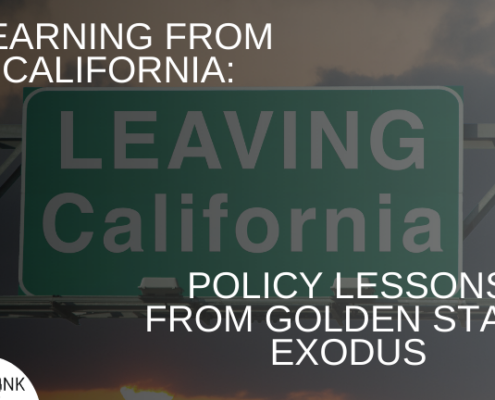
Learning From California: Policy Lessons From Golden State Exodus

New England Short Circuit: Distorted Incentives Drive Energy Prices Up and Reliability Down

Controlling Drug Prices: Costs and Benefits of Direct Negotiation with Big Pharma
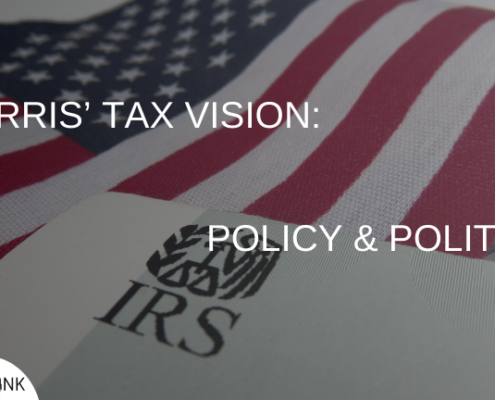
Harris’ Tax Vision: Policy & Politics

Digital Privacy Divide: Can Law Enforcement Google Where You’ve Been?

Housing Bond Bill: Could Billions Better Bay State Cost of Living
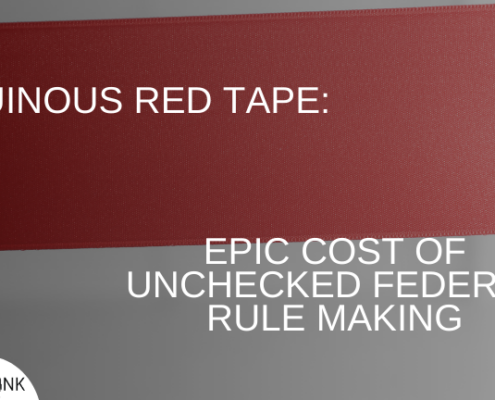
Ruinous Red Tape: Epic Cost of Unchecked Federal Rule Making
